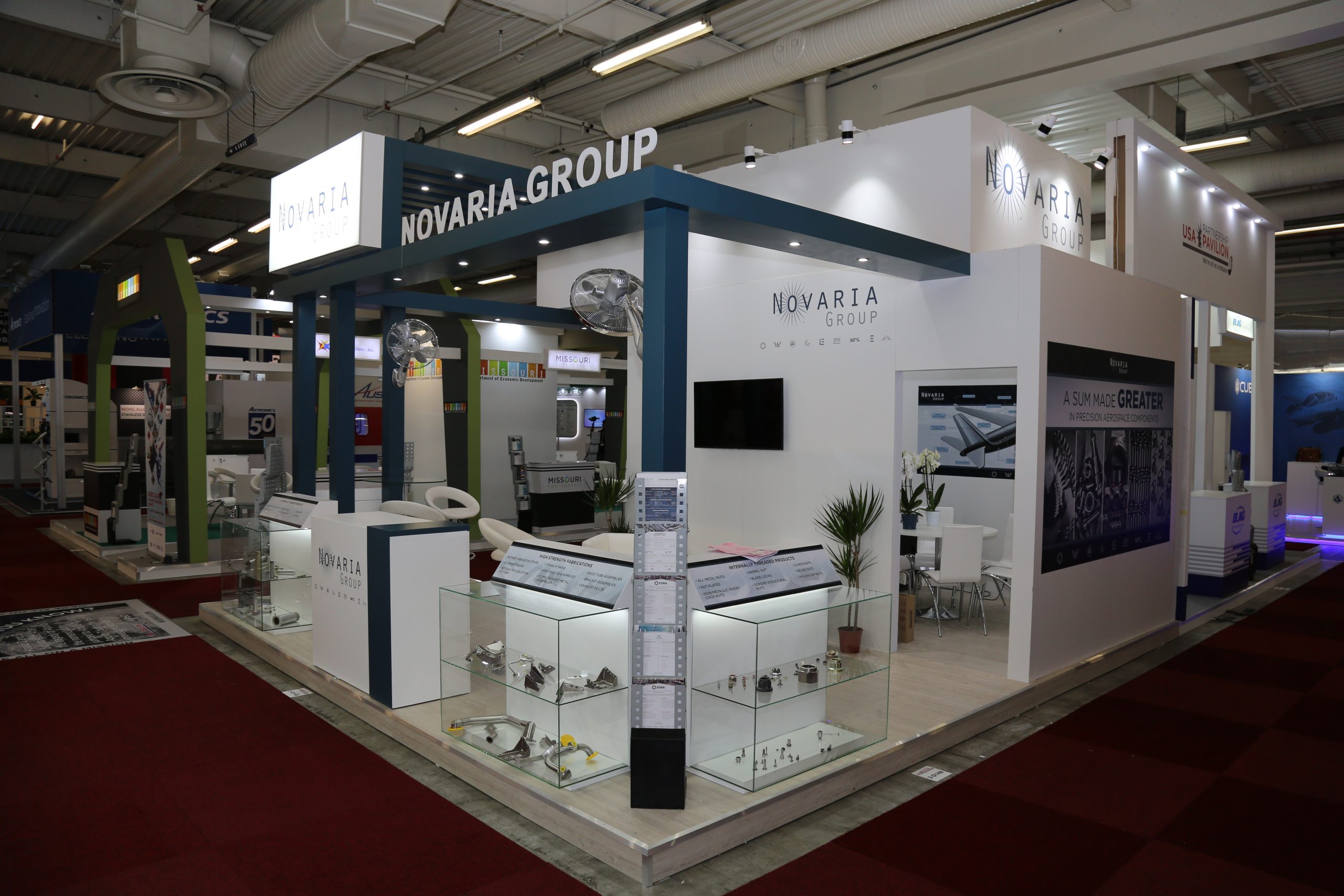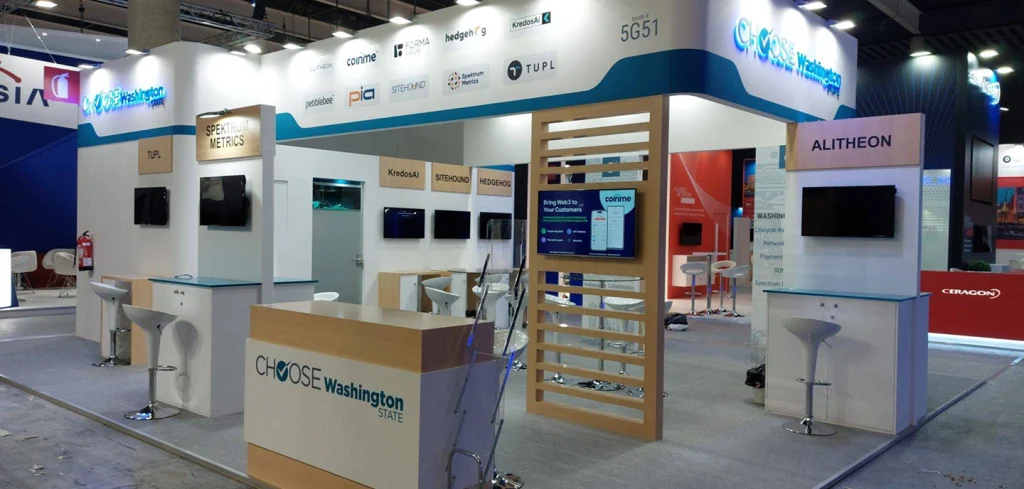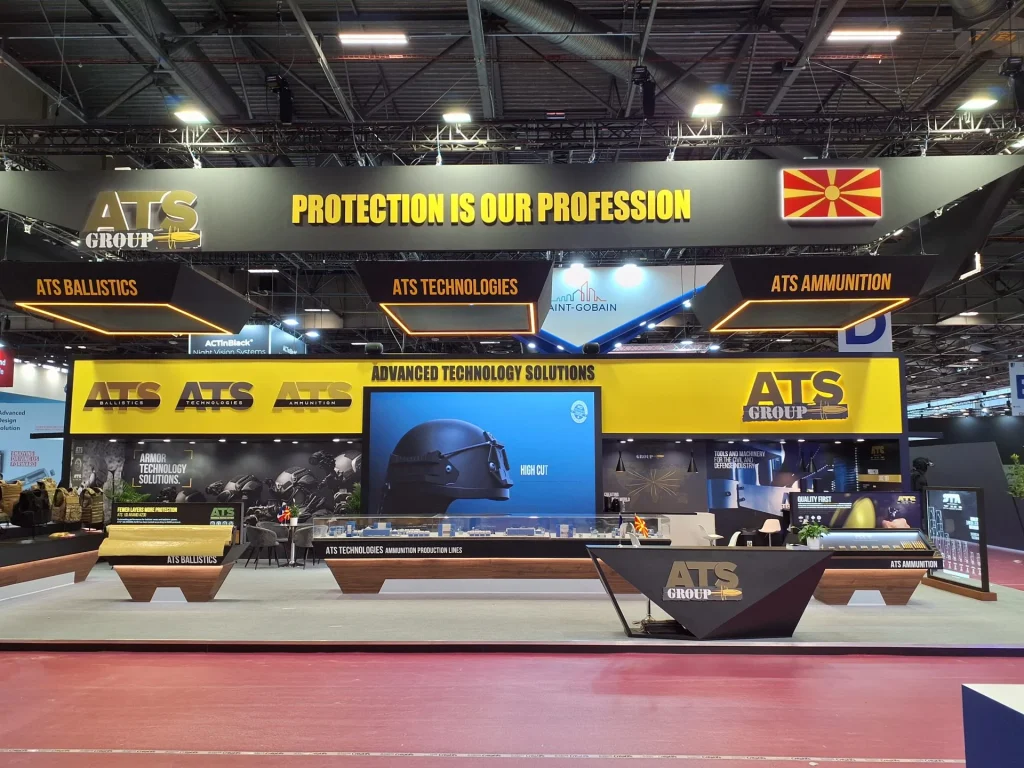
Introduction:
Sustainability is becoming increasingly important in the world of trade show exhibits, where the traditional build-and-dispose approach is being replaced by more eco-friendly practices.
Designing a sustainable booth involves considering the entire lifecycle—from concept and construction to dismantling and reuse. This comprehensive approach not only reduces environmental impact but also enhances brand reputation and efficiency. This blog explores the lifecycle of a sustainable booth and provides practical tips for each stage.
1. Concept and Design:
Setting Sustainability Goals: The first step in creating a sustainable booth is to establish clear sustainability goals. These goals will guide the design process and ensure that all decisions align with your commitment to environmental responsibility.
- Define Objectives: Determine specific objectives such as minimizing waste, using renewable materials, and reducing carbon footprint.
- Stakeholder Involvement: Engage key stakeholders early in the process to ensure buy-in and support for sustainability initiatives.
Choosing Sustainable Materials: Selecting eco-friendly materials is crucial for reducing the environmental impact of your booth.
- Recycled and Recyclable Materials: Use materials with a high percentage of recycled content and those that can be easily recycled after use, such as aluminum, glass, and certain plastics.
- Renewable Resources: Incorporate materials made from renewable resources like bamboo, cork, and organic fabrics.
- Non-Toxic Finishes: Opt for non-toxic paints, adhesives, and finishes to improve indoor air quality and reduce health risks.
Modular and Flexible Design: Designing a booth with modular components allows for easy reconfiguration and reuse.
- Standardized Modules: Create standardized modules that can be assembled in various configurations to suit different spaces and requirements.
- Multi-Functional Elements: Design elements that serve multiple purposes, such as displays that double as storage units or seating areas.
2. Construction:
Efficient Construction Techniques: Adopting efficient construction techniques minimizes waste and energy consumption.
- Prefabrication: Use prefabricated components that can be assembled quickly and with minimal waste on-site.
- Precision Cutting: Utilize precision cutting and assembly methods to reduce material wastage.
Local Sourcing: Source materials and labor locally to reduce transportation emissions and support local economies.
- Local Suppliers: Partner with local suppliers who provide sustainable materials.
- Community Engagement: Engage local craftsmen and laborers to support the community and ensure high-quality construction.
3. Transportation and Installation:
Optimizing Logistics: Efficient logistics planning reduces the environmental impact of transporting and installing the booth.
- Compact Packaging: Design booth components to be compact and easy to transport, minimizing the number of trips and the volume of packaging materials.
- Efficient Routing: Plan efficient transportation routes to reduce fuel consumption and emissions.
On-Site Assembly: Ensure that the on-site assembly process is efficient and environmentally friendly.
- Reusable Tools and Equipment: Use reusable tools and equipment to minimize waste.
- Minimal Disruption: Plan the installation process to minimize disruption to the event space and reduce energy consumption.
4. During the Show:
Energy Efficiency: Operate your booth in an energy-efficient manner during the show.
- LED Lighting: Use energy-efficient LED lighting to reduce power consumption.
- Smart Technologies: Implement smart technologies to control lighting, heating, and cooling, ensuring they are only used when necessary.
Engaging Attendees: Promote your sustainability efforts to attendees and engage them in your mission.
- Educational Displays: Include educational displays that highlight the sustainable features of your booth and your company’s commitment to the environment.
- Interactive Elements: Incorporate interactive elements that encourage attendees to learn about and participate in sustainability initiatives.
5. Dismantling:
Efficient Dismantling: Plan the dismantling process to minimize waste and damage to booth components.
- Clear Instructions: Provide clear instructions for dismantling to ensure components can be easily disassembled and reused.
- Reusable Packaging: Use reusable packaging materials to protect components during transportation and storage.
Waste Management: Implement a waste management plan to handle any waste generated during dismantling.
- Segregation: Segregate waste materials for recycling, composting, or proper disposal.
- Partnerships: Partner with waste management companies that specialize in recycling and sustainable disposal methods.
6. Reuse and Repurposing:
Storage and Maintenance: Properly store and maintain booth components to ensure they can be reused for future events.
- Climate-Controlled Storage: Store components in a climate-controlled environment to prevent damage from humidity and temperature fluctuations.
- Regular Maintenance: Perform regular maintenance checks and repairs to extend the lifespan of booth components.
Repurposing Materials: Find creative ways to repurpose materials that are no longer suitable for their original purpose.
- Upcycling: Upcycle materials into new products or components for future booths.
- Donations: Donate materials to schools, community centers, or other organizations that can use them.
Conclusion:
Designing a sustainable trade show booth involves considering the entire lifecycle—from concept and construction to transportation, use, dismantling, and reuse. By adopting circular economy principles and focusing on sustainable materials, modular design, and efficient processes, businesses can create booths that are both environmentally friendly and cost-effective.
Embracing these practices not only reduces the environmental impact of trade shows but also enhances brand reputation and contributes to a more sustainable future. As the demand for sustainable solutions grows, businesses that prioritize sustainability in their booth design will stand out and lead the way in responsible event practices.


 Global
Global USA
USA

